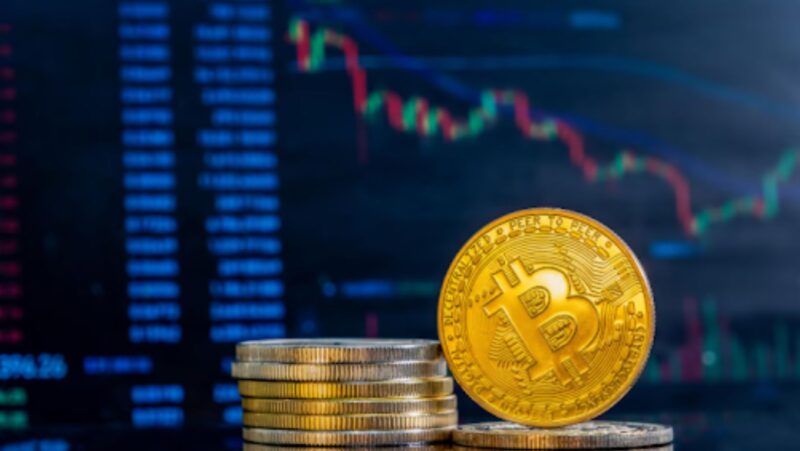
Crypto prices can skyrocket or plummet in minutes, creating wild opportunities and serious risks. Flash rallies and crashes throw traders into high-stakes situations, sometimes wiping out portfolios before they even realize what happened.
Understanding why these price swings happen and how to handle them can make all the difference between surviving the market and getting wrecked. Let’s break it down.
Why Flash Rallies and Crashes Happen
Sudden price spikes or drops aren’t random—they’re triggered by a few recurring factors that amplify market volatility.
1. Algorithmic Trading and Bots
Most trades in crypto markets are automated. When algorithms pick up on momentum, they can send prices soaring or crashing in seconds. If one bot starts selling aggressively, others follow, creating a chain reaction that wipes out liquidity.
2. Market Manipulation
Big players, or “whales,” take advantage of thin order books to push prices up or down at will. Spoofing—placing large fake orders to trick the market—is a common tactic. It creates artificial price moves, baiting smaller traders into reacting.
3. Low Liquidity and Thin Order Books
Some cryptos don’t have enough buy and sell orders stacked up. When someone places a massive trade, there aren’t enough opposing orders to absorb it, causing wild price swings.
4. Leverage and Liquidations
Many traders use leverage to amplify their bets. If the market moves against them, exchanges force liquidations, adding more selling pressure and accelerating the price drop.
5. News and Hype Cycles
Crypto reacts fast to headlines. A bullish tweet from a major figure or a sudden regulation announcement can trigger massive swings as traders rush to react before the dust settles. The rise and fall of Test Token Binance is a prime example. Initially introduced as a demonstration tool, it unexpectedly gained traction and was listed on a major exchange.
The hype pushed its market cap to $500 million before a sharp decline of over 60% left many traders reeling. This case highlights how quickly sentiment can shift and why speculative assets fueled by social media trends demand caution.
Managing the Madness: How to Protect Your Trades
Flash crashes and rallies are part of the game, but traders can take steps to reduce their risks:
- Use Stop-Loss and Take-Profit Orders: Automated exits prevent emotional decision-making.
- Limit Leverage: High leverage increases risk exposure and the chance of forced liquidations.
- Check Liquidity Levels: Thin order books make assets vulnerable to sharp price swings.
- Diversify Holdings: Spreading investments across multiple assets mitigates risks.
- Track Market Sentiment: Watching whale movements and hype cycles offers early warning signs.
The Role of Exchanges in Market Stability
Exchanges influence price stability through trading policies and infrastructure. Some platforms have circuit breakers that halt trading when prices drop too fast, preventing panic-driven liquidations. However, not all exchanges implement these measures, leaving traders exposed to extreme volatility.
Concerns over listing processes have also sparked debates about investor safeguards. Some tokens experience sudden rallies followed by crashes, raising questions about transparency in new listings. Traders should research an asset’s fundamentals rather than relying solely on listing announcements.
Psychological Impact on Traders
Extreme volatility isn’t just a financial issue—it affects decision-making. Watching a portfolio swing by double-digit percentages in minutes can push traders toward impulsive actions that lead to losses.
To maintain control:
- Stick to a well-defined trading plan.
- Take breaks when emotions start influencing decisions.
- Use paper trading to refine strategies without real financial risk.
Long-Term Effects on the Crypto Market

Repeated flash crashes shape institutional attitudes toward crypto. Many traditional firms hesitate to enter the space due to stability concerns. However, as the market matures, improved liquidity, regulatory oversight, and institutional adoption may reduce extreme fluctuations over time.
Final Thoughts
Flash rallies and crashes are part of the crypto landscape, making risk management a top priority for traders. Those who stay informed, use smart trading strategies, and remain disciplined can turn market volatility into an advantage rather than a setback.
The key to success isn’t avoiding these swings—it’s learning how to navigate them effectively. Stay ahead of the game by continuously refining your strategy, tracking market trends, and making data-driven decisions.
Want to trade smarter and minimize risk? Start by implementing these strategies in your next trade and see how a well-planned approach can transform your results.




